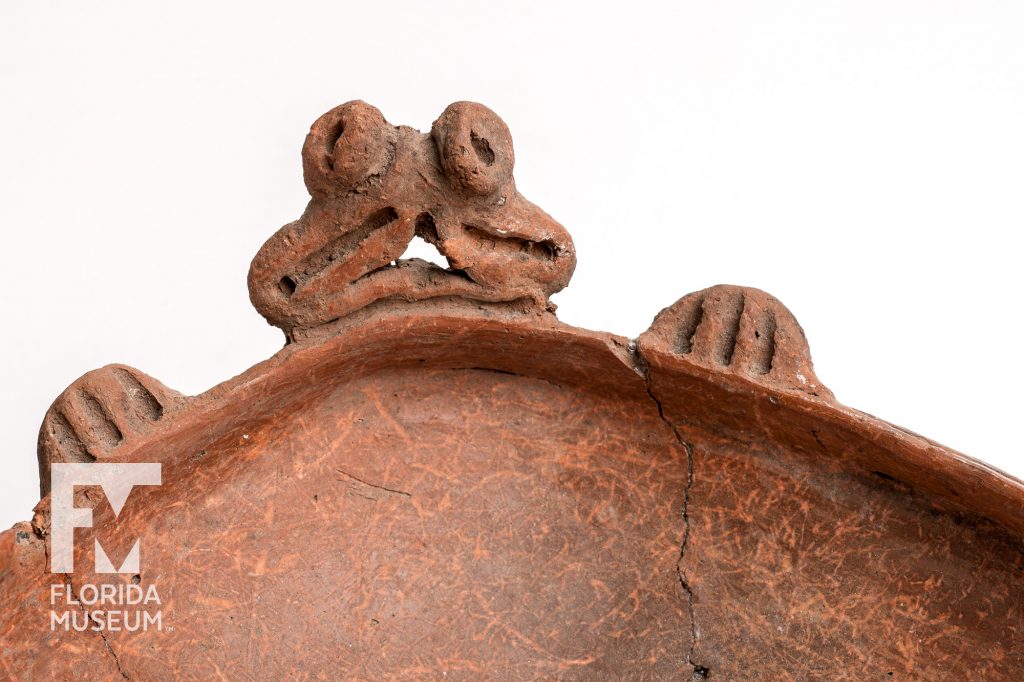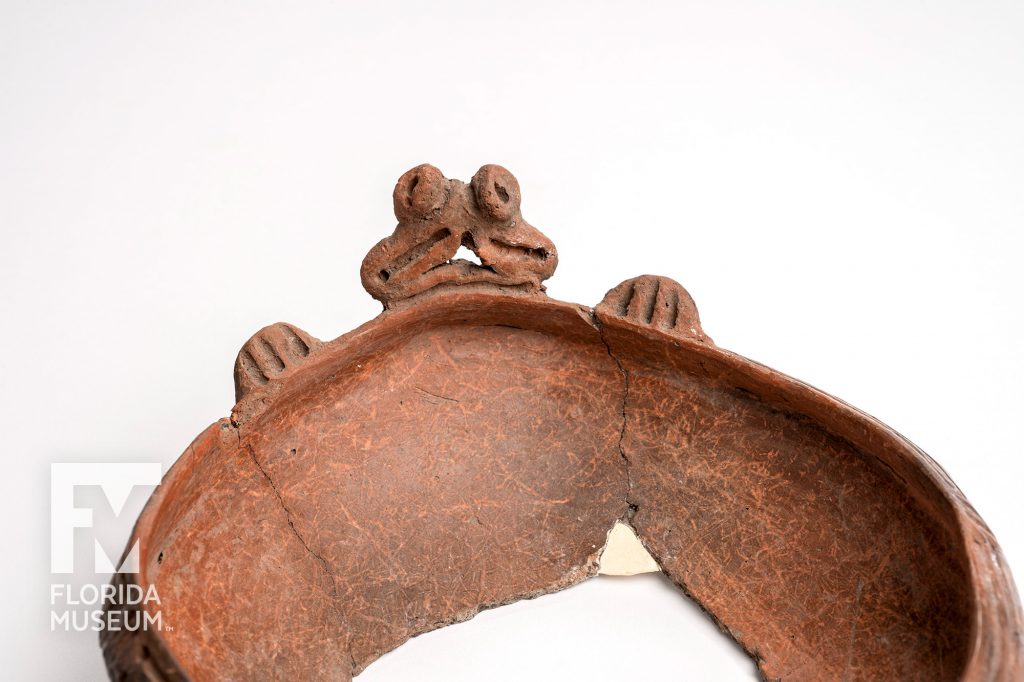In ancient Taíno cultures, frogs and the color green were symbols of female fertility related to beneficial rains. The most important female deity, Attabeira, also was represented as a “Frog Woman.” This vessel would have been used to serve a beverage or broth.
Summary
Vessel with Frog Adorno (face)
Made by Taíno people, Dominican Republic
Dates to ~AD 1300-1500
Collection
Story
This is a relatively typical pottery vessel from the late time period in the Dominican Republic. It dates to sometime around 1200 to 1500 A.D. prior to the arrival of Europeans. It was fairly common to decorate the vessels with what we call adornos, which are usually animal or a human animal — anthropomorphic or zoomorphic if you want the terms that we use to sound fancy — and they represent important animals in the belief systems of the native peoples.
So the Taino had a special place for frogs. We see frogs represented in shell pendants, in petroglyphs (carvings on the walls of caves), in the pottery vessels and frogs are a symbol of fertility. Frogs are commonly associated with rainfall; often they will croak or make noise before it rains or after rains, in some cases they become more common as the eggs mature and they become tadpoles and then frogs. And the frog has a very special place because it’s associated with the female goddess of fertility, a woman known as Attabeira, and she is the representation of what you might call the “mother goddess” or the “giver of life” to the Taino peoples. But frogs also show up in sort of smaller form, less elaborate form, indicating their importance.
It is often difficult archaeologically to understand what people were thinking, so these kind of representations are sort of our only way into starting to gain an understanding of people’s belief systems.
Bill Keegan
Curator, Caribbean Archaeology*
Florida Museum of Natural History
Exhibit
On display Sept. 23, 2017-Jan. 7, 2018, Rare, Beautiful & Fascinating: 100 Years @FloridaMuseum celebrated the Museum’s rich history. Each Museum collection was asked to contribute its most interesting items and share the stories that make them special. Though the physical exhibit is closed, this companion website remains online, providing an opportunity to experience the Florida Museum’s most treasured specimens.
Exhibit Area: Objects Tell Stories
Theme: Ancient Artifacts
 Want to see more? Explore more than 300 breathtaking color photos of plants, animals, fossils and cultural heritage materials from the Florida Museum of Natural History’s collections in the award-winning book All Things Beautiful available from the University Press of Florida.
Want to see more? Explore more than 300 breathtaking color photos of plants, animals, fossils and cultural heritage materials from the Florida Museum of Natural History’s collections in the award-winning book All Things Beautiful available from the University Press of Florida.
*This title was accurate at the time the exhibit was on display in 2017. Please visit the collection website to verify current staff and student information.


